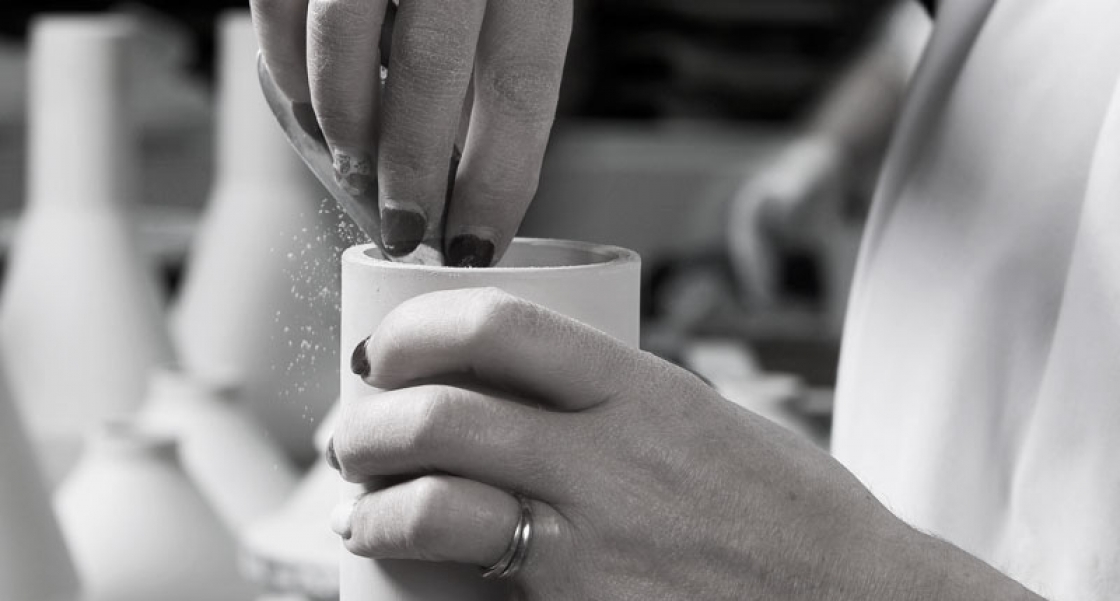
Made from the earth, earthenware is a humble material often unfairly considered as ‘cheap’. “It is just clay.” – this is a sentence we are, as ceramics manufacturers, quite used to hear and regarding this we have something to say: yes, it is clay but there is a lot at stake to transform simple clay into beautiful works of art and design. What are then the major factors behind the cost of ceramics?
Industrial Craftmanship – Hand by hand
The production of a ceramics piece involves a phased and methodical process in which great part of time and effort is developed by hand.
“The hand labor represents around 60% of the piece´s cost in our factory which is not a surprise when we conclude that one piece is, in average, touched by 8 to 10 pair of different hands along the process”, says Carla Moreira, Arfai CEO.
From the casting section, where experienced men and women manually fill the plaster molds, turning them upside down and opening them carefully, to the finishing section where the piece is scraped and sponged by hand until the application of glaze and hand painting where talented hands decorate the piece.
Why is a big ceramics piece more expensive? In some cases, we need more than one or two men to move the molds. And why is a very tiny one not that cheaper than a medium size vase? Because the same time and hand labor is involved.
The Gas
Perhaps the most acknowledged one, the gas is the second biggest cost influencing a piece’s price. Having each item fired at least for 2 times – first to become biscuit and finally to have the finishing applied – gas represents a significant investment that depends on geopolitical factors.
Blame it on plasticity
Clay is a soil material that due its composition has one fundamental characteristic – plasticity. This is the one property that allows the clay to be transformed without breaking, but also, on the other hand, the reason why ceramics are so easily influenced by its environment.
With firing, the kiln high temperatures’ dry the clay humidity and ceramics becomes a hard and thick material – but until then, numerous factors may impact the process: a light breeze passing by and bending a tall piece, a hot summer day fastening the drying period and provoking heterogeneous contraction or, instead, a wet day increasing the drying period between the casting and the finishing section. These uncontrollable factors, by increasing the possible number of breakages, may delay the production capacity and, once the time is money, increase the cost per item.
Applying glaze, adding value
“In a ceramics piece, the cost of the glaze is higher than the clay.” – states Helena Jerónimo, chief-accountant at Arfai.
Reactive, selenium, metallic and lusters? Consider the cost of the glaze itself and have in mind how is it applied – many finishing options, as the case of lusters, imply a third firing process that will increase both the hand labor and the gas.
(Learn what are ceramic glazes)
In a design, the chosen glaze may determine the piece’s value – low, medium or high cost – at Arfai, we have them all.

